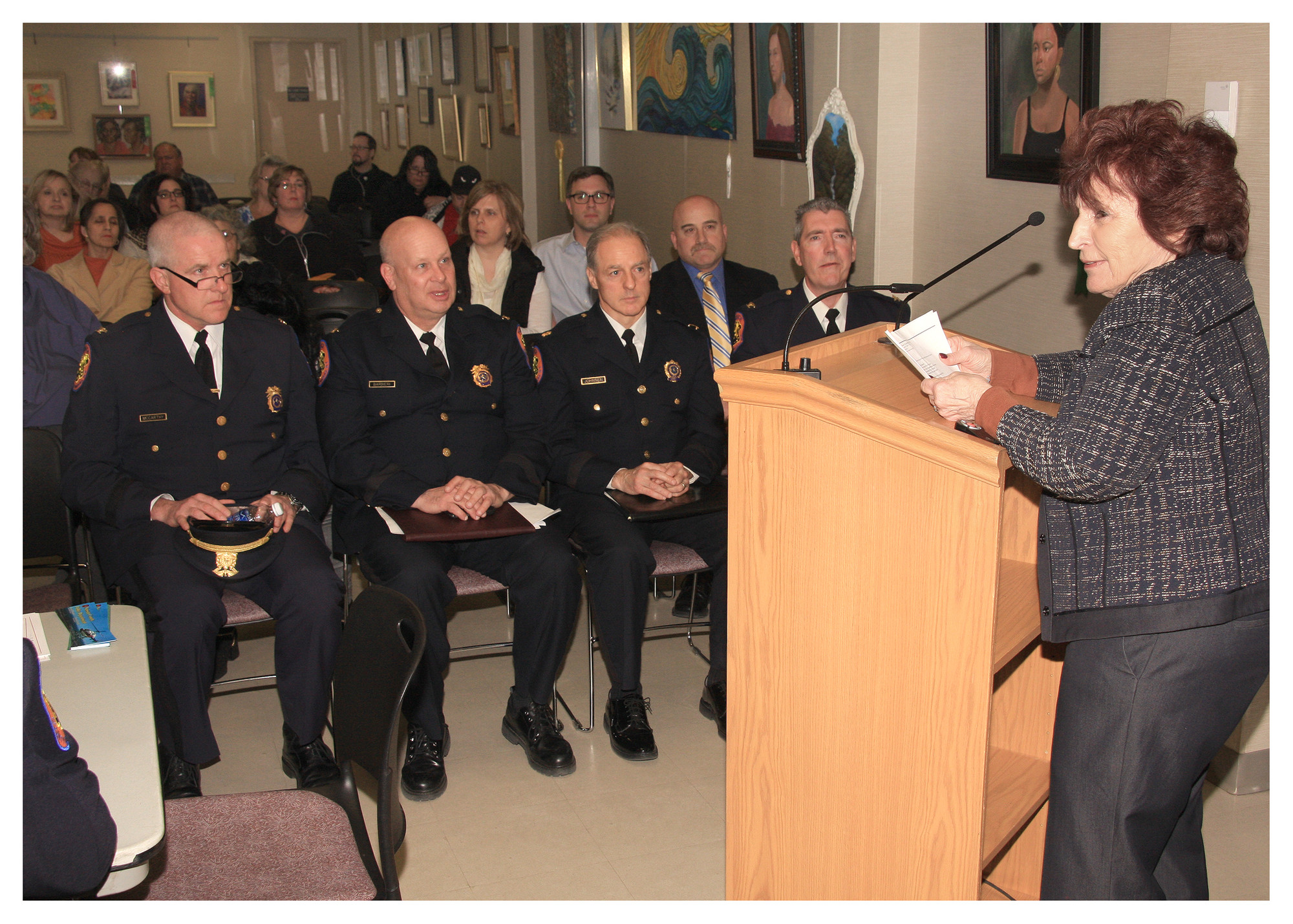Residents, police talk safety
Heroin, speeding among topics discussed at public forum
Dozens of local residents gathered in the East Meadow Public Library on April 9 to discuss a wide array of crime, safety and quality of life issues plaguing the East Meadow and Salisbury communities in recent months.
The forum, hosted by Nassau County Legislature Presiding Officer Norma Gonsalves, comprised top officials from the Nassau County Police Department, including Police Chief Steven Skrynecki, and commanding officers from precincts 1, 2, 3 and 7, all of which contain parts of the 13th Legislative District.
According to Skrynecki, between Jan. 1 and March 31 of this year, major crime in Nassau County is down 16 percent over that same time frame one year ago.
On a local scale, major crime is down 6.48 percent in the 1st Precinct over the same period, Skrynecki said, and has dropped even more in the 3rd Precinct, at about 18 percent.
East Meadow falls in the 1st Precinct, and Salisbury the 3rd Precinct.
Crime is down despite a diminishing police force — according to Skrynecki, the department has been in a hiring freeze the last three years. But the police chief said he is hopeful a new class of officers could be added soon. Last week, he said the county Legislature approved a contract that could add as many as 170 police officers in the near future.
A new form of policing
Skrynecki discussed Strat-Com, the new intelligence-based policing method the county implemented in January, short for “strategic communication.” Top-ranked police officials meet once every 28 days, he said, combing through recent crime and combining information and statistics to determine what trends are occurring in each precinct. Using intelligence analysts and available technologies, police are able to pool resources towards predicting when these crimes will happen next, and place patrol cars and plain-clothes officers in the appropriate locations.
According to Skrynecki, the method works because about 10 percent of residents commit some 90 percent of the crime. “We identify the problem people, we identify the problem areas,” he said, “and we put our resources there.






